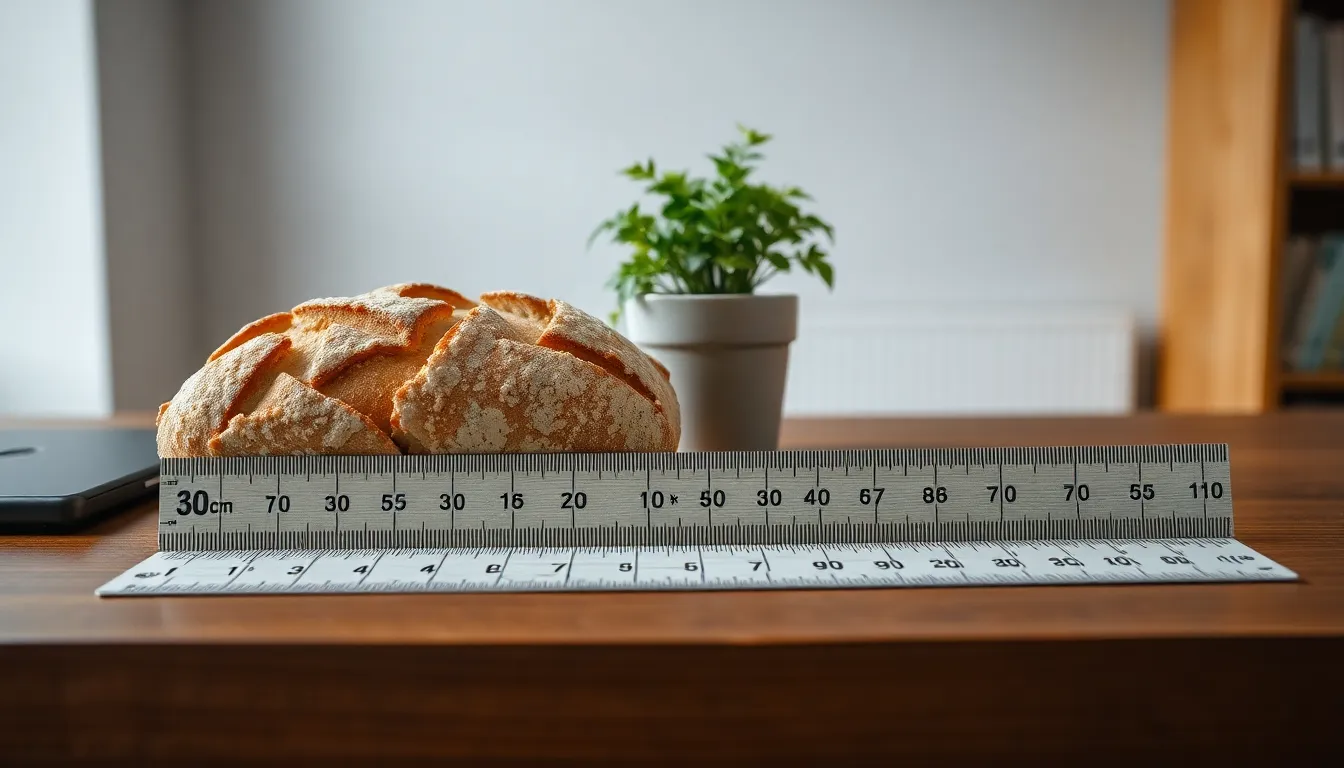When it comes to measurements, 50 cm might seem like a simple figure, but it holds significance in various contexts. Whether it’s for crafting, home decor, or even fitness, understanding how big 50 cm really is can help in making informed decisions.
Visualizing this length can be tricky without a frame of reference. To put it into perspective, 50 cm is roughly the length of a standard ruler or half a meter. This article will explore practical examples and comparisons to clarify just how big 50 cm is, making it easier for readers to grasp its size in everyday life.
Table of Contents
ToggleUnderstanding Measurement Units
Measurement units play a critical role in quantifying and comparing lengths. The metric system, widely used around the world, includes centimeters as a fundamental unit. One centimeter is one-hundredth of a meter, making it essential for defining smaller distances.
Understanding how 50 cm relates to other measurements helps grasp its size. For instance, 50 cm equals 500 millimeters, providing a more detailed view for precision tasks. In comparison, this measurement is also close to 19.7 inches, useful for contexts that utilize imperial units.
Familiar references can aid in visualizing 50 cm. It’s similar to the height of a medium-sized desk plant or the length of a standard loaf of bread. By using real-world objects, individuals can better appreciate the practicality of this measurement.
Various fields rely on accurate measurements, including tailoring, architecture, and engineering. Knowing how to interpret and apply units like centimeters enhances communication and fosters an understanding of dimensions in professional settings.
Comprehending measurement units and their applications equips individuals to navigate daily tasks more effectively.
Visual Representation of 50 Cm

Visualizing 50 cm enhances comprehension of this measurement in daily life. Understanding its dimensions through familiar objects fosters better practical application.
Everyday Objects That Measure 50 Cm
- Standard Ruler: A standard classroom ruler typically measures 30 cm, making two of these rulers combined nearly equal to 50 cm.
- Loaf of Bread: A regular loaf of bread usually measures about 30-40 cm long, bringing a standard-sized loaf close to half a meter.
- Medium-Sized Desk Plant: Many medium-sized desk plants reach heights around 50 cm, providing a relatable reference for indoor decorating.
- Laptop: Some laptops, particularly those with 15-inch screens, measure around 38 cm in width, which gives a sense of scale when positioned next to other items.
- Baseball Bat: A regulation youth baseball bat, often measuring approximately 50 cm, offers a clear representation of this measurement in sports.
Comparing 50 Cm to Other Lengths
- 50 Cm to Meters: Fifty centimeters equals 0.5 meters, emphasizing the relationship between these two metric units.
- 50 Cm to Inches: Fifty centimeters converts to approximately 19.7 inches, offering insight for those familiar with the imperial system.
- 50 Cm to Feet: This measurement is about 1.64 feet, useful for understanding indoor and outdoor dimensions.
- 50 Cm to Millimeters: Fifty centimeters comprises 500 millimeters, highlighting the scale for applications requiring finer measurements.
- Comparison to Human Heights: A child aged 3-4 years typically measures around 100 cm, indicating that 50 cm is about half the height of a young child, providing context for growth milestones.
The Importance of Accurate Measurements
Accurate measurements play a critical role in various practical applications. Precision ensures clarity across multiple fields, including crafting, construction, and science. In these areas, even minor discrepancies can lead to significant errors. For example, a seamstress relies on precise fabric cuts to create well-fitting garments. Architecture necessitates accurate dimensions for stable structures.
Various industries incorporate metrics prominently. The metric system, especially centimeters, serves as a fundamental measurement unit. Using centimeters aids in ensuring consistency and standardization in global communication. In contexts like distance, 50 cm transforms into essential comparative measurements, equating to 500 millimeters or approximately 19.7 inches, allowing for coherent discussions across countries that use different systems.
Each inch of a project counts. Implementing concrete examples illustrates the real-world implications of accurate measurements. For instance, a 50 cm measurement might represent the ideal height for a small indoor plant or the precise length of a shelf in a room design. Tailoring often demands specific lengths, where accuracy affects the final product’s fit and aesthetics.
Measuring tools further enhance this understanding. Rulers, tape measures, and calipers offer precision for individuals across various tasks. When a 15-inch laptop measures about 38 cm, knowing dimensions helps consumers select appropriate cases or desks, emphasizing the importance of accurate data.
By comprehending measurements like 50 cm, individuals gain insights into growth patterns and everyday comparisons, enriching their understanding of the environment around them. Accurate measurement facilitates communication, allowing a shared understanding essential for collaboration in work and daily life.
Practical Applications of 50 Cm
50 cm serves critical roles across various practical applications, enhancing everyday activities and professional tasks.
- Crafting: In crafting, a length of 50 cm simplifies projects like sewing and woodworking. It provides a manageable size for fabric pieces, ensuring accuracy in cuts and seams.
- Home Décor: For home décor, 50 cm fits well as a standard height for decorative items, such as vases or wall art. This measurement complements furniture arrangements, allowing for visually balanced displays.
- Fitness: In fitness, equipment often incorporates 50 cm measurements, such as exercise mats. A standard yoga mat typically measures about 60 cm in width, while a stretching band may extend to around 50 cm.
- Education: In educational environments, 50 cm functions as a reference point for teaching measurements. It aids in grasping concepts of length and scale during math or science lessons.
- Architecture & Engineering: In architecture and engineering, precise measurements are crucial. A dimension of 50 cm often appears in the design of furniture, fixtures, and spaces, promoting functionality and aesthetics in plans.
- Food Industry: The food industry applies 50 cm in food preparation tools and packaging. For example, rolling pins often measure close to this length, standardizing pastry tasks, while serving platters may feature similar dimensions for optimal presentation.
Understanding 50 cm in these contexts fosters better decision-making and planning in both personal and professional realms.
Understanding how big 50 cm is can greatly enhance one’s ability to navigate various tasks in daily life. This measurement serves as a common reference point in crafting home decor fitness and more. By visualizing 50 cm through familiar objects and contexts individuals can make informed decisions that lead to better outcomes.
Accurate measurements are essential in many fields from tailoring to architecture. Grasping the significance of centimeters fosters effective communication and promotes consistency. Whether it’s choosing the right size for a plant or determining the length of a shelf understanding 50 cm empowers individuals to approach their projects with confidence and precision.









